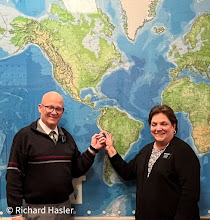Lightning in a Camera
 In a village called Challachalla we prepared one of the chocolatadas and we built a fire of dried dung to heat the water for the hot chocolate. Despite the local expertise, the process met with middling success. The biggest limiting factor affecting our frustration came in the form of the rain that fell, first in a drizzle and then in a fair steady downpour. The downpour cooled our slowly warming pot. To call this day dreary would be a complete and utter understatement and misuse of the term. Soaked to the bone, with inadequate rain gear we huddled under tarps and borrowed woolen skirts and even though we had promised cake and hot chocolate, even the campesinos stayed their homes.
In a village called Challachalla we prepared one of the chocolatadas and we built a fire of dried dung to heat the water for the hot chocolate. Despite the local expertise, the process met with middling success. The biggest limiting factor affecting our frustration came in the form of the rain that fell, first in a drizzle and then in a fair steady downpour. The downpour cooled our slowly warming pot. To call this day dreary would be a complete and utter understatement and misuse of the term. Soaked to the bone, with inadequate rain gear we huddled under tarps and borrowed woolen skirts and even though we had promised cake and hot chocolate, even the campesinos stayed their homes.At last the family nearest our project invited us into their humble abode and offered to let us cook in there. It was quaint inside the thatched hut/cottage with a couple of cooking pits, one low to the ground and suitable to our pot. The upper, day-use pit was still warm from the morning meal but no live coals and the kittens drowsed there in the ashes. I could hear the squeaking sounds of the cuyes in their little warren behind that stove but the house was dark, dingy and reeked of stale dung smoke that was so thick on the thatch and rafters that it fell on us while we sat there.
In a ceramic bowl, I brought in live dung coals from the fuming project outside and gave them to the señora to fire the dry fuel she had inside. Almost immediately the house filled with smoke, thicker than, well, it still wasn’t heaven but at least we were out of the rain, choking… but out of the rain.
 The lady of the house had me bring in the tube I had used outside to blow the fire. Expert in her craft, she bent to the task of blowing the coals and in the murky interior I saw the makings of a National Geographic photo. Snatching my camera from its pouch before the coals could catch, with smoke pouring from the ceramic stove; I set my camera to flash and fired the photo. Serendipitously timed in near perfect sync with one of her exhales, the flash fired and in one fluid motion she threw down the tube, stood bolt-upright, dashed clear across the house and shouted “Walaaaaaaa!” Apparently, walaaaaaaa! is quechua for holy crap! or something.
The lady of the house had me bring in the tube I had used outside to blow the fire. Expert in her craft, she bent to the task of blowing the coals and in the murky interior I saw the makings of a National Geographic photo. Snatching my camera from its pouch before the coals could catch, with smoke pouring from the ceramic stove; I set my camera to flash and fired the photo. Serendipitously timed in near perfect sync with one of her exhales, the flash fired and in one fluid motion she threw down the tube, stood bolt-upright, dashed clear across the house and shouted “Walaaaaaaa!” Apparently, walaaaaaaa! is quechua for holy crap! or something.When she realized that it wasn’t some sort of biblical freak flash of consuming flame in the dung stove, or a bolt of lightning, (see the last blog) she started to laugh and prattle on about her start. Pretty soon the house, full of her sisters and other women from the community, filled with laughter and quechua prattle about the funny gringo and his camera flash.







